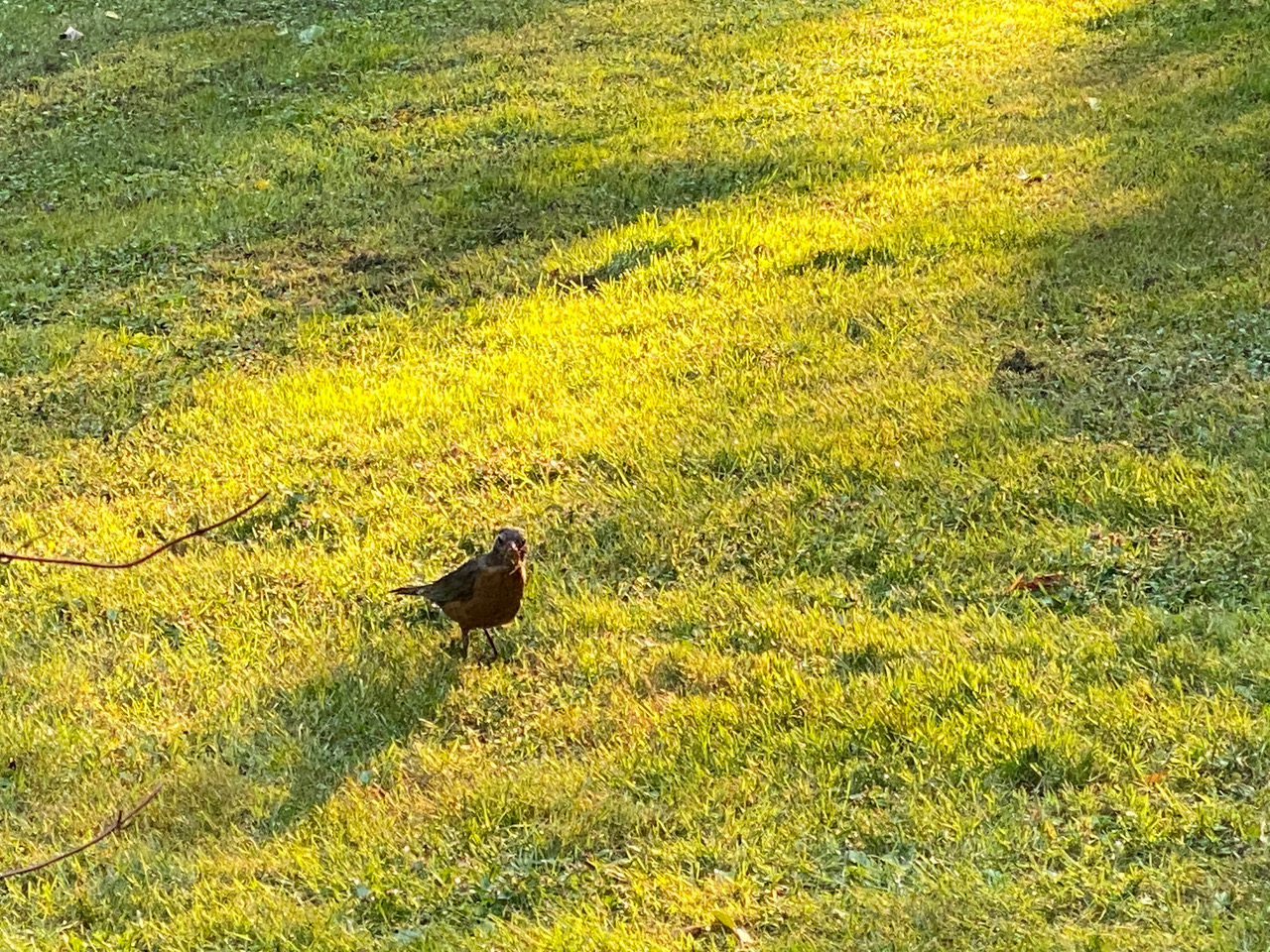By Annie Thoe, GCFPCM
Cultivating nature awareness is very similar to the Feldenkrais Method® in tracking patterns of movement, effort and skeletal alignment. The process of building awareness of the natural world takes time and steady discipline to track changes and patterns in the environment.
One of the best ways to get to know an environment is to listen and watch the local birds. Birds offer us the highest perspective in the natural world— literally. They move in all directions and have remarkable awareness of the activities and changes in the environment. Indigenous people all over the world turn to birds for information on how to survive— where the water, food and honey is located and much more. Songbirds in particular give us a constant report of the activity around us. Without songbirds, we wouldn’t have a clear map and updates of where and which predators are moving. I’ve spent the past 20 years tuning into this “bird Language” using my training from the Wilderness Awareness School and the work of Jon Young, Jr.
Over the past year I moved to the countryside outside of Seattle where I had more access to wildlife at my doorstep. I made a conscious choice to be more of a participant and neighbor to my immediate natural environment.
When I first arrived, I thought the animals and birds would flock toward me because of my enthusiasm and love for nature connection. But in the first few months I noticed the squirrels seemed very shy, most of the birds stayed far away and I rarely saw a deer or rabbit. What was I doing wrong?
Only a solitary song sparrow seemed brave enough to sing and strut around my deck. I was grateful for his daily company and conversations. I wondered what it meant to “be a good neighbor.” Was I a good neighbor?
Over the years of studying nature and the Feldenkrais Method, I’ve experienced two different ways to be in nature. One is as a spectator and the other as a participant. As a spectator, I learned ways to sneak up closer to birds and wildlife or wait for them during long sit-spot practices. My stealthy approach often felt voyeuristic. How would I feel if my neighbors aimed their binoculars in my direction?
Like a safari spectator, I may collect data with my camera and notebook to observe and capture images of the “wild birds and animals” to broaden my knowledge. And while learning information can be exciting and satisfying, I didn’t really feel a sense of my own place or deeper intimacy with these creatures.
In fact, this spectator way I observed nature continued to make me feel more separate and alien from it.
Can humans be a harmonious part of this natural world? Can I find my place in nature?
A few months ago, I taught a Feldenkrais® online series learning from the movements, behavior and awareness of the American Robin. This iconic bird often brings the first song of spring to North America. The robin is one of the most prolific and biggest communicators within our environment. Most people can identify this colorful bird and even recognize their song.
During this series of studying the robin, I noticed they often ran away from me. No matter what I tried, I could barely get close enough to snap a photo of them. I felt like a nosy neighbor. My study even attracted the attention of one of my neighbors who came out to see what I was doing! And then, something happened. I started treating the robins with the same respect I gave my human neighbors. I stopped and gave them time or space to walk in front of me, noticing them but not staring. I gave them the common courtesy I gave my human neighbors or anyone I might meet on the street.
I wondered if the robins felt my prior spotlight of attention as a threat. How subtle is this shift of attention to turn from interest into a threat? Any woman has probably felt the vulnerability of unwanted stare from a strange man in a crowd or while walking alone. My shift of courteous respect of the robin gradually spread to all animals and birds around me. Any time my mind shifted into “staring” or “moving closer to taker a picture” would change the mood and connection. The bird would fly away, the squirrel would scold me and I was reminded how quickly I became an outsider versus respectful neighbor.
Today, I have a robin family that lives near my front door. We know each other through daily interactions as they are hunting for worms often within a few feet of where I sit. I hadn’t dreamed I would feel this depth of respect or acceptance. This quality of awareness the birds teach me has much to do with sensing the invisible territories and life force of living things. This palpable experience of respecting one’s space is so helpful in my human work during Feldenkrais lessons. Birds can help us see and feel a bigger connected world and guide us to be better neighbors.
About Annie:

Annie Thoe is a Feldenkrais Method Assistant Trainer. Her conference offering is: Song Bird Wisdom: Mother Nature Rock Me. She has a practice in Seattle, YouTube Channel: https://www.youtube.com/c/SensingVitality Her website is: www.sensingvitality.com

